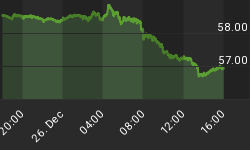Three broad conditions are largely blamed for the inflationary spiral of the 1970s:
(1) Increases in commodity prices, especially oil and food;
(2) An overheating economy characterized by an expanding money supply and tight labor markets, which resulted in wage inflation;
(3) Government intrusion into many areas outside its traditional role, and an associated regulatory burden and "red tape." Today we are already seeing commodity prices (oil in particular) rise and the labor market is tight as a drum. However, a lot of people are unaware of the re emergence of government similar to the conditions of the 1970s.
The main reasons that many people are not aware of the growth of government are simple:
(1) the federal government is running a surplus so people are not as focused on the size of government and;
(2) the Clinton/Gore administration tells us that government is shrinking and that they have "reinvented" government. They are lying. Seven years ago, when the Clinton/Gore administration was just taking office, the number of nondefense government employees stood at 18,727,000
(Source: Department of Labor, Bureau of Labor Statistics).
Today, the number of nondefense government employees stands at 21,012,000, a 12.2% increase over 7 years. The point is, by this measure, government has certainly grown, and at the fastest rate in 20 years (the last time inflation was a real problem for our economy).
Another way to measure the size of government is through the current expenditures of the federal government. According to the Bureau of Economic Analysis of the Commerce Department, government hasn't been reinvented, it just keeps on growing, and growing, and growing... When the Clinton/Gore administration was just getting started back in the first quarter of 1993, Federal Government Current Expenditures on a Seasonally Adjusted Annual Rate stood at $1,449,800,000,000, or just under one and a half TRILLION dollars. In the first quarter of 2000, that number stands at $1,790,500,000,000, or just under $1.8 TRILLION.
Government has not been reinvented and the government has not shrunk. Keep in mind that government expenditures increased by more than $300 billion over the past seven years despite the fact that our armed forces are about half the size now as they were just a decade ago. Those of us who do not recognize this may one day soon wake up and find rolls of red tape to contend with. Twenty one million federal employees have to spend $1.8 trillion on something!
















